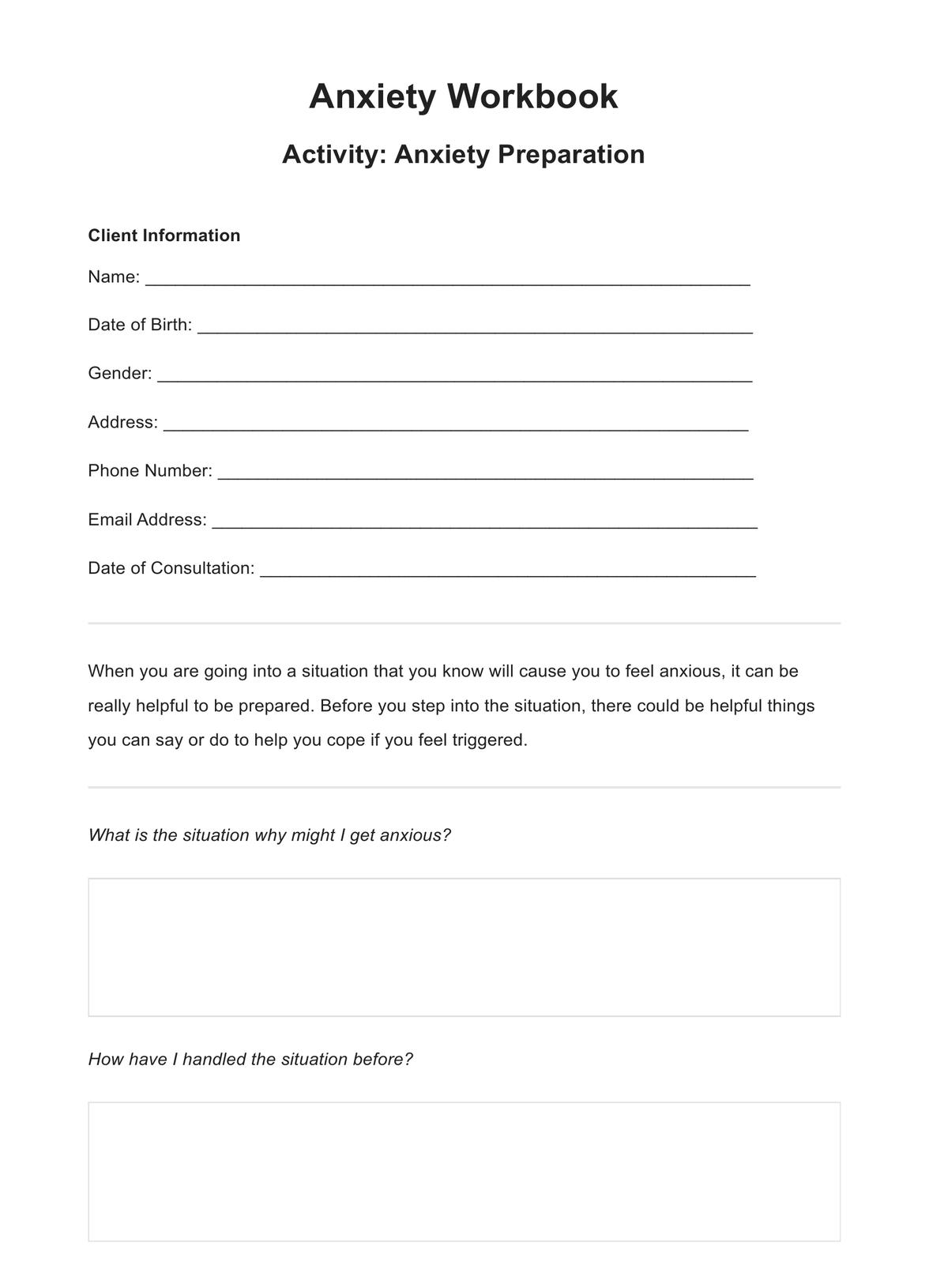An anxiety workbook can help individuals by providing a framework to explore their anxiety triggers, thoughts, and behaviors. It offers practical exercises to develop coping skills, challenge negative thinking patterns, and cultivate relaxation techniques. It promotes self-awareness, empowers individuals to take control of their anxiety, and assists in developing effective strategies for managing symptoms.

Anxiety Workbook PDF
Comprehensive anxiety workbooks for healthcare professionals. Evidence-based strategies, exercises, and resources for effective anxiety management.
Anxiety Workbook PDF Template
Commonly asked questions
Anxiety workbooks can be a valuable complement to therapy, but they are not intended to replace professional help. While workbooks offer guidance and tools for self-reflection, therapy provides the expertise, guidance, and personalized support of a trained mental health professional. If anxiety symptoms are severe or significantly impacting daily functioning, it is advisable to seek assistance from a qualified therapist.
Anxiety workbooks are designed to be used independently, allowing individuals to work at their own pace and explore their anxiety in a self-guided manner. However, some individuals may benefit from additional support or guidance, especially if they encounter difficulties or require clarification on certain exercises. In such cases, consulting a therapist or counselor can enhance the effectiveness of using an anxiety workbook.
EHR and practice management software
Get started for free
*No credit card required
Free
$0/usd
Unlimited clients
Telehealth
1GB of storage
Client portal text
Automated billing and online payments











